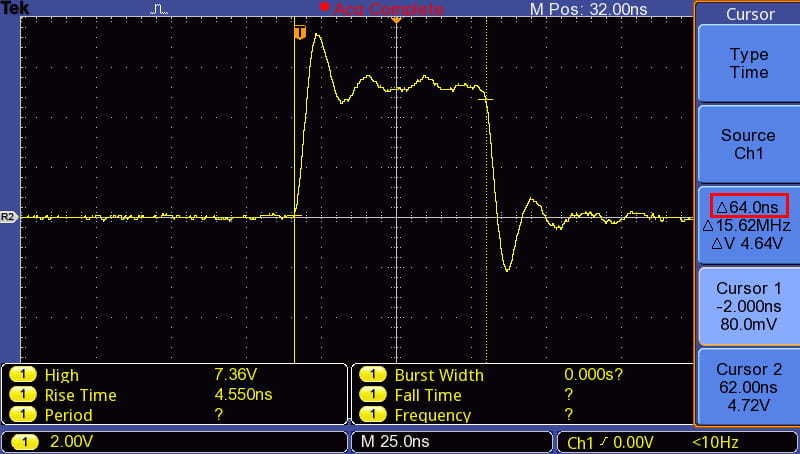53. 64-nano-Seconds Pulse Detection
Design a task using Arduino UNO with the following requirements
- Detect a pulse generated by another Arduino UNO (or similar device).
- Upon detecting the pulse, toggle the LED.
Note: No pulses should be missed, and the LED state must be updated immediately
Code for generating pulse (another Arduino UNO)
- This code generates a pulse of width 64 nanoseconds for every 5000 ms.
- The pulse is generated on pin no. 7.
void setup() {
Serial.begin(115200); // Initialize serial communication at 115200 baud rate
pinMode(7, OUTPUT); // Set pin 7 as an output pin
digitalWrite(7, LOW); // Set pin 7 to LOW (initial state)
}
void loop() {
PORTD = 0x80; // Set the 7th bit of PORTD to HIGH (binary 10000000), turning on pin 7
PORTD = 0x00; // Set all bits of PORTD to LOW (binary 00000000), turning off pin 7
Serial.println("Pulse Generated"); // Print "Pulse Generated" to the Serial Monitor
delay(5000); // Wait for 5000 milliseconds (5 seconds) before repeating the process
}
Generated output pulse:
The below pulse is generated by the Pulse Generator after every 5 seconds.
The width of the pulse is around 64 nano-seconds.

